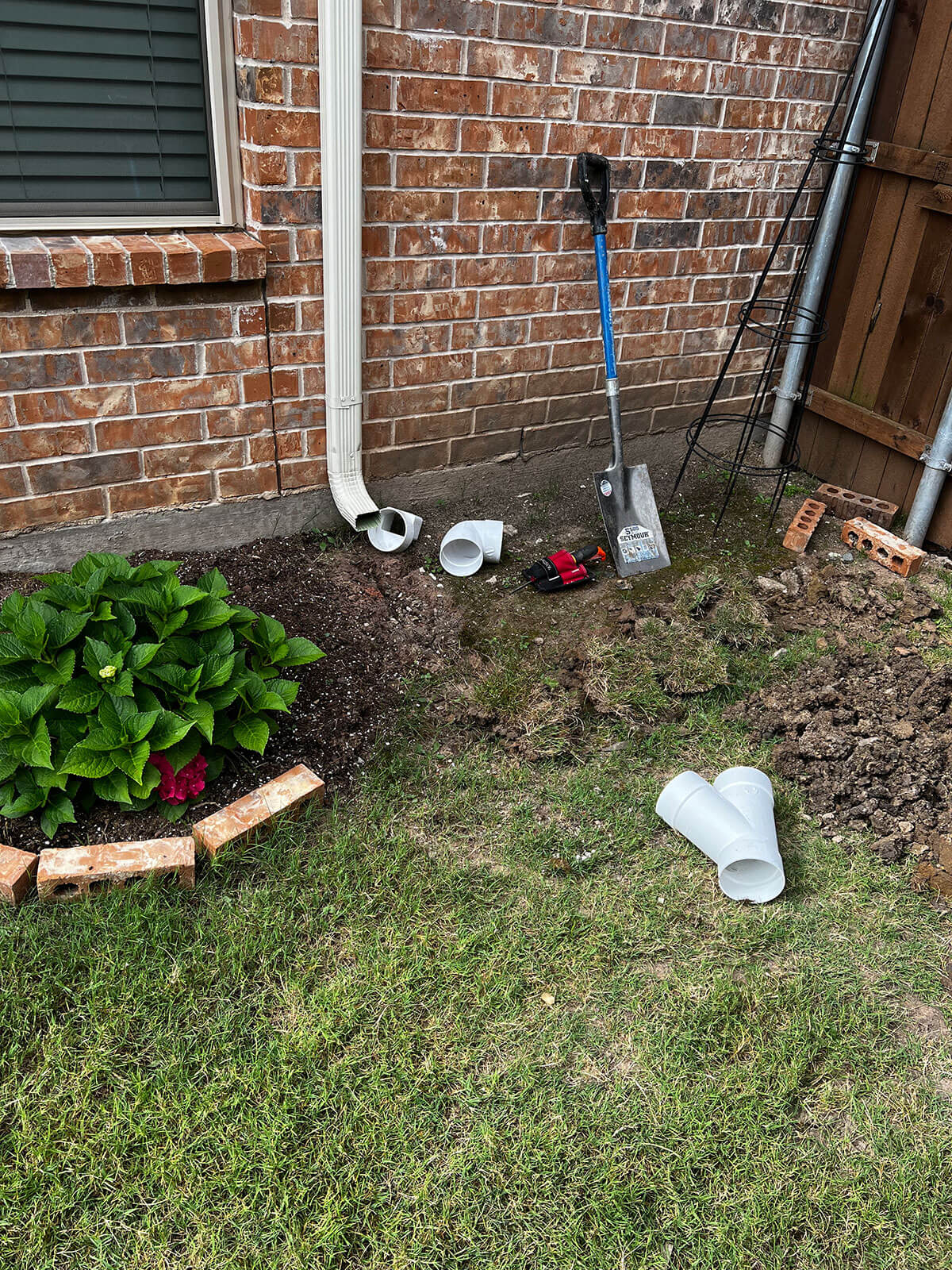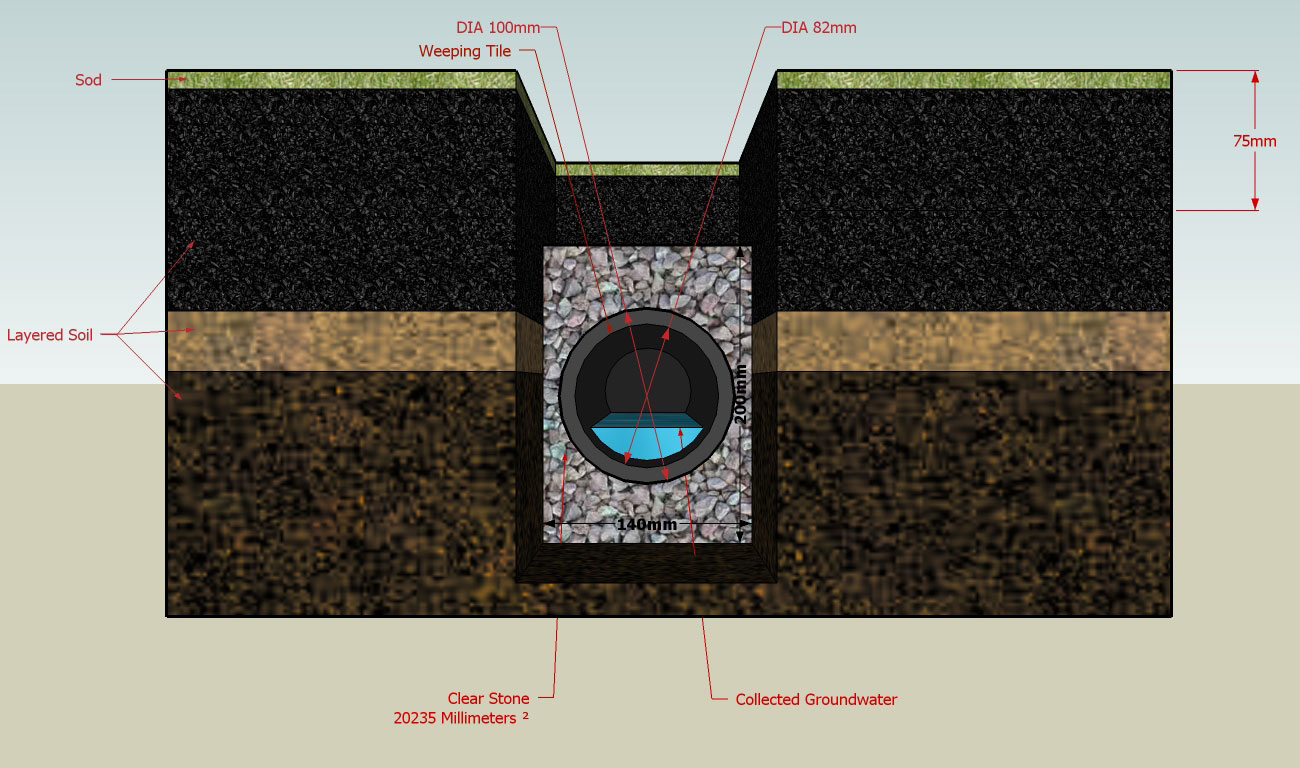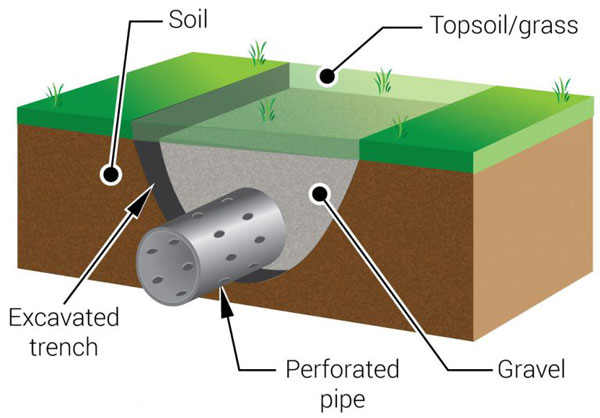Carefully Planned Drainage Solutions
The most important aspect of drain installation isn’t the installation itself but the planning
We thoughtfully assess your home to determine which type of drain installation, a surface or subsurface French drain, is the optimal solution.
Thoughtful Assessment, Optimal Placement
We determine a solution that is ideal for, and will protect, your home
Once we’ve determined the areas where water is collecting on the property, we will map out exactly where the French drain will be located and start the installation process.


How French Drains Work
Once the French drain system is installed, excess surface and subsurface water will channel through the gravel and into the perforated piping, flowing through the trench and away from the property. Some of our clients have the water run into drainage ditches, while others run the water out into the street. Installing a French drain can be a complicated process that can lead to problems if it’s not done properly. The best way to ensure the job is done correctly is to hire a professional technician from Fields Sprinkler Drainage Lighting who can ensure your yard drainage system is completed without complication.
Many times we are called in to repair or perform maintenance on drainage systems that have not been designed to meet the needs of the landscape it was intended for. When this happens, we sometimes find it necessary to start the process over, and other times we’ll have to reconfigure the drainage making sure the French drain will perform adequately no matter how much rain hits the ground. Don’t wait until the next hard rain hits–call our drainage technicians to meet with you for a consultation to determine the best solution for your drainage problems.

How We Install French Drains
Water will always flow downhill by the most accessible route possible. That is the basic concept behind a French drain, which is a slightly sloped trench typically filled with gravel and a single pipe to divert water away from the home.
The system itself may not seem too challenging, however, installation requires careful planning and finesse.
First, a reliable trench is dug through the landscape. The channel is generally situated outside of the footing of the house and should be at least two feet wide and up to six feet deep. Some are as shallow as two feet for a slab-on-grade home.
The drainage pipe is then laid carefully into the soil. It is crucial that the pipeline is sloped from a high starting point and ends at a lower elevation to help excess water drain accurately.
From there, the tube is covered by a minimum of 12 inches of washed gravel. Filter fabric is carefully placed over the gravel to prevent soil from clogging the pipe. Finally, topsoil is added to the top.
Advantages of French Drain Systems
Installing a French drain system provides you with numerous benefits, including:
